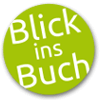"A masterly new book." --New Yorker
"A major achievement in the study of religious attitudes." --Notre Dame Philosophical Reviews
To understand the nature of religious belief, we must look at how our minds process the world of imagination and make-believe.
We often assume that religious beliefs are similar in kind to ordinary factual beliefs--that believing in the existence of supernatural entities that hear our prayers is akin to believing that May comes before June. Neil Van Leeuwen reveals that, in fact, these two forms of belief are strikingly different. Empirical findings show that religious beliefs function not like beliefs concerning mundane reality but like the imaginings that guide make-believe play.
When a person pretends, they navigate the world by consulting two maps: the first represents mundane reality, and the second superimposes features of the imagined world atop the first. Drawing on psychological, linguistic, and anthropological evidence, Van Leeuwen posits that religious communities operate in just this way, consulting a factual belief map that represents ordinary objects and events, as well as a religious credence map. The latter accords everyday objects and events an imagined supernatural significance that defines a community's identity and expresses its sacred values.
It is hardly controversial to suggest that religion has a social function, but Religion as Make-Believe breaks new ground by theorizing the underlying cognitive mechanisms and deepening our understanding of the individual and group psychology of faith.
 Und dann auf "Zum Home-Bildschirm [+]".
Und dann auf "Zum Home-Bildschirm [+]".











